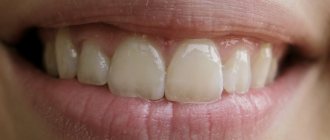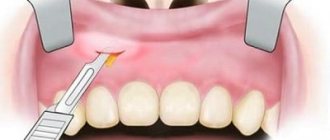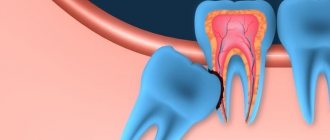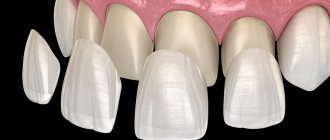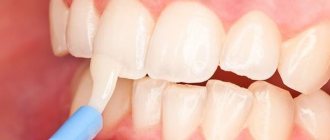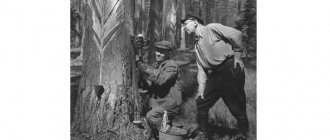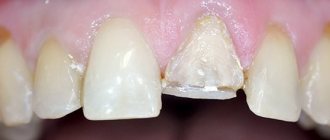In order for the wound surface to shrink faster, it is necessary to create favorable conditions for the regenerative process to occur. They can be ensured by wound drainage performed in a manner appropriate to the type of injury. It is not always performed, but only according to the surgeon’s indications. Based on modern medical concepts, the drainage process, depending on what type was chosen, should clear the damaged surface of blood clots, thereby eliminating the possibility of infection and the entry of pathogenic microorganisms into the wound.
Manipulation helps to tightly connect the separated wound surfaces, thus stopping capillary and vascular bleeding and to clean and disinfect the damage before applying a bandage. Wound drainage is a therapeutic and prophylactic technique used in surgery to create an unfavorable environment for the development of infectious infection in the wound by maintaining the removal of discharge from the damaged area and monitoring the healing process.
Indications
Drainage is installed if it is necessary to ensure the outflow of transudate discharged from the wound into the external environment. Drainage is necessary if there is inflammation of an infectious nature or conditions that cause the wound surface to become inflamed and pus to appear in it.
The technique is also used when it is necessary to remove localized accumulations of blood clots, lymph, purulent and bile secretions from a damaged surface and in order to control the regeneration process. In addition, surgeons often resort to drainage if there is a risk of bleeding after surgery.
How to properly make drainage around the house. Step-by-step instruction
After completing the design work and purchasing everything you need, you can begin work.
- Clearing the area. Remove debris and anything that might interfere with work.
- Preparing the trench . Dig trenches while maintaining the slope. The minimum width is equal to the pipe diameter plus 30 cm. The slope is checked by level. Its size is 1-2 cm per 1 meter.
- Backfill. Fill the trenches with sand in a layer of at least 10 cm.
- The foundation is prepared for the wells . Make a platform of suitable size, filled with sand. If the groundwater level is high, the site for the well is concreted with a 10-centimeter layer on which the well is fixed.
- Cover the trenches with geotextiles . Its edges should extend beyond the top edges of the trenches.
- Laying drains . Crushed stone is poured onto the geotextile in a layer of 10-20 cm, leveled so that the thickness is the same and the angle of inclination does not change. Drains are laid, connecting them with fittings or sockets. Connect the pipes to the “inputs” of the well. For tightness, rubber O-rings are used.
- Backfilling of pipes . An even 20-centimeter layer of crushed stone is poured over the pipes and wrapped in geotextiles.
- Backfilling with sand . 20 cm of sand is poured on top of the geotextile, compacted, and covered with soil.
- Digging a well . The wells are buried and covered with lids.
If there is a large amount of precipitation in the region, especially in summer, storm drainage trays (storm drains) are located directly above the drains. They are laid on a sand cushion.
You can see an example of laying drainage around a house in this video.
Types
Drains can be represented by strips of latex, made of rubber, silicone, vinyl chloride, fluoroplastic and Teflon. Sometimes drainages made of gauze folded in several layers are also used, but since they have a short operating time, they are used infrequently. Rubber drainage also has shortfalls. It is quickly delimited by fibrin formed in the wound, adhesions of the epidermis and deep tissues in which it is installed.
At the moment, surgeons prefer complex drainage systems, represented by multi-lumen, cuff, rubber-gauze, T-shaped and fan types. The general requirements for drainage are softness, smoothness, strength and transparency of the material. Also, all drains must be radiopaque.
Do-it-yourself drainage installation around the house
It is quite possible to install drainage around the house yourself. For this, basic drawing knowledge and the ability to perform simple construction and installation work are sufficient.
Before starting work you must:
- conduct geodetic and geological surveys of the site;
- determine the type of future drainage system;
- draw up a project.
This work must be performed by specialists. Without the appropriate skills and equipment, drawing up a project yourself can lead to serious mistakes. As a result, all the work will have to be redone.
If drainage is built incorrectly under the foundation, this will lead to premature destruction of the building and the need to demolish and rebuild the house.
On topic: Site drainage, step-by-step instructions on how to do it yourself in 5 steps.
Selection of materials and their estimated cost
The selection and purchase of materials is carried out when the project is ready.
For a DIY drainage system around the house you will need:
- geotextiles with a density of 100 -150 g/m2; price from 17 rub./m;
- drains; price from 50 rubles per meter of plastic pipe;
- crushed stone or gravel larger than the size of the holes in the drains; from 200 rub/m3;
- sand; from 100 rub/m3;
- plastic inspection well; from 950 rub.;
- plastic collector well; from 10,000 rub.;
- drainage sediment; submersible type from 3000 rub.;
- fitting.
Drains are made of plastic, asbestos-cement and ceramic. Preference should be given to pipes made of high-strength plastic that can withstand significant loads.
There are plastic drains on sale, wrapped in geotextile or coconut copra.
Asbestos-cement pipes are heavy and require special equipment for careful and correct installation. Ceramic ones have a high drainage capacity, however, they are fragile, difficult to install, and may not withstand the pressure of frozen soils.
What tools will you need?
Before you begin, you need to prepare your tools. You will need:
- bayonet and shovel shovels;
- garden wheelbarrow;
- level;
- roulette;
- manual rammer.
Kinds
Drainage can be passive, flow-flushing or active.
Types of drainage (source https://studfiles.net/preview/4603856/page:16/)
Passive
Passive drainage is currently carried out using perforated tubular systems made of polyvinyl chloride or thin tubes filled with gauze. Drains are positioned in such a way that they drain the liquid component from top to bottom. This mechanism of action is ensured by the force of gravity pressing on them.
Active
When performing active drainage of sealed tissue and epidermal damage, aspiration is used based on vacuum, provided by a special suction. This technique allows you to remove dead flesh, minimize the joining of wound edges, and reduce the likelihood of pathogenic microflora entering the cavity from the outside.
The drainage is installed in such a way that it removes the separated liquid from the bottom up, against the influence of gravity on it. It is necessary to take into account that this drainage is not used to remove growing hematomas.
Flow-flushing
Flow-flush type drainage is carried out using aspiration flushing with the installation of counter-perforated drainage systems. Medicine is injected into one of them, and transudate is removed from the damaged tissue through the second.
The drug can be administered into the drainage in a stream, drip, fractionally or continuously. Outflow is carried out according to the active or passive method. With the help of such drainage, pathogenic microorganisms do not enter the wound, transudate is completely removed from it, thus creating favorable conditions for healing and unfavorable conditions for bacteria.
Postoperative wounds are drained due to the high risk of developing inflammatory processes of purulent etiology. This situation is due to the fact that contamination occurs in the wound during surgery, represented by subcutaneous tissue and the impossibility of completely removing dead tissue.
Drainage must be installed by introducing counter-perforated systems into the cavity through the holes left from dialysis after surgery. Drainage is often prescribed in the case of removal of cancerous formations in the mammary gland, local hernias of the ventral type, amputation of the lower and upper extremities and surgical cleansing of a purulent focus in soft tissues.
After the purulent focus is opened, the doctor installs passive drainage, which is always done in such cases. The technique of installing drains is studied by operating nurses in the dressing room or operating room when working with patients with various types of wounds.
How to determine the need for a drainage system
The surest sign of increased soil moisture is the massive growth of plants, typical of swampy areas. These include weeping willow, sedge, and reed.
In addition to plants, evidence of the close occurrence of groundwater will be puddles that remain after rain or spring melting of snow. If they do not go away for a long time, then there is enough other moisture in the ground.
It doesn’t always rain, so it’s much easier to use a long-proven method of checking the soil moisture level. To do this, you need to dig a hole about half a meter deep at the highest point of the site. If water collects at the bottom within 24 hours, it means that the area needs drainage.
Principles of staging
The basic principles of drainage installation are presented:
- Installation of drainage systems in the sloping area of the wound cavity.
- Fixing the drainage device.
- By creating such conditions that the drainage does not come into contact with important anatomical formations, represented by nerve endings, vascular network and tendon apparatus.
- Minimizing complications after the procedure.
- Preventing depressurization of the wound cavity and compression of tissues with their damage.
- Minimizing the penetration of pathogenic microorganisms into the cavity through drainage tubes.
Purpose of the drainage system around the house
Drainage around the house and blind area (a waterproof covering around the perimeter of the building, located at an angle to the wall for easy drainage of water) are necessary to protect the foundation and base of the walls from the effects of groundwater and precipitation. The blind area performs an important function, but without a drainage system it is not able to effectively protect the house from moisture.
Heavy rains and melting snow raise the groundwater level. In the absence of a water drainage system, the following processes occur.
- Water stagnates in the upper layers of the soil. The soil becomes swampy and heaving. When it freezes, it expands, putting uneven pressure on the foundation. As a result, the house settles unevenly.
- At the same time, water seeps into the microcavities of the foundation and the base of the walls. When it freezes, it expands, increasing the size of the cavities. Over time, the foundation cracks, which sharply reduces the life of the structure.
- Water seeps into the basement through cracks. This causes mold growth and damage to supplies and equipment placed in underground areas.
- Further, dampness and mold spores rise to residential floors, affect walls, furniture and cause diseases in households. In cold weather, moisture in the underground causes the formation of frost on baseboards and walls.
Drainage around the garden plot is used to create optimal soil moisture on flooded lands. This gets rid of puddles and stagnant water. Allows you to grow the desired crops and get a good harvest.
Peculiarities
Wounds, especially those with a purulent etiology, need proper therapy. In order for the cavity to heal faster and the pus to disappear completely, it is necessary to install drainage.
Drainage is divided into types. If the patient is in a supine state, then the drainage system is installed at the lowest point so that the contents from the cavity flow out independently under the force of gravity.
Passive drainage can also be used. It will absorb the liquid contents of the wound. But since it is weakly effective, it is used infrequently.
With the help of active drainage, the wound can be treated with antiseptic and anti-inflammatory drugs, and the purulent contents can be removed mechanically.
Drainage can be made of plastic, glass, rubber and gauze. The device most often has different sizes and diameters, selected based on the depth, width and type of wound.
For drainage to be effective, it must be selected individually for each wound surface. It also needs to be positioned correctly, and the materials for its creation must be selected so that they correspond to the sensitivity of the microflora.
Drainage of cavities is carried out during the inflammatory process. Once the cavity is cleaned and begins to heal, the drainage must be removed. It is also worth removing the device when an inflammatory process begins around it.
When installing drainage, it is necessary to observe all aseptic measures, since through drainage tubes or holes, not only transudate can escape, but also pathogenic microorganisms can enter the wound cavity.
Failure to install drainage will lead to accumulation of transudate in the cavity. The wound healing process always depends on many factors and, in the absence of a drainage device, can lead to an inflammatory purulent process.
If it starts, or a hematoma forms in the wound, the scar will take much longer to form, and healing will be more difficult. It is for this reason that if there are indications for drainage, you should not refuse it. Don't risk your health and always follow your doctor's orders.
Indications for drainage removal and technique for performing the process
There are two indications for drainage removal:
- Complete cleansing of the wound and confirmation of its healing.
- Inflammatory changes were recorded in the place where the system was installed.
During removal, sterility rules must be observed, since not only pus comes out through the drainage hole, but also infection penetrates. The cost of the procedure is low - several times lower than the cost of removing lipomas, fibroids and other surgical procedures.
It is also important that the system is not compressed or bent - both while in the body and when removed. The doctor must position it optimally for a particular patient and prevent any complications - pain, damage to tissues, blood vessels, etc.
Price
If you have certain knowledge and experience, you can drain the site yourself. But only a well-planned drain will work correctly, draining the area in a timely and efficient manner. Only experienced specialists can eliminate many errors, correctly calculate angles of inclination and choose the optimal project in terms of material consumption. It is worth noting that drawing up a competent plan will help to avoid additional redevelopment in the future, which will significantly reduce the material costs of the owner of a personal plot.
It is best when drainage is designed together with the house Source domvpavlino.ru
The price of a finished drainage system project with installation depends on the size of the territory, the desired number of inspection wells, and the complexity of the terrain. The cost of installing a turnkey drainage system starts from 1,200 rubles per linear meter. Glubinogo - from 2700 rubles per linear meter.
Foundation drainage from Jheka
JhekaFORUMHOUSE Member
While it’s still hot and everything that can be dried out, it’s time to do drainage. Our groundwater is quite close; in winter, when the water freezes, heaving sometimes occurs under the blind area. Now under the blind area there is insulation, 100 mm EPPS, but, nevertheless, it was decided to do drainage.
The watershed will begin from the entrance to the house, the pipes will go to the sides and along the entire perimeter. There is one concrete collector well planned, behind the fence opposite, with pumping of wastewater into a ditch.
The foundation is a monolithic shallow tape; a meter was removed from the Jheka blind area and a trench 40 cm wide was marked out to make digging easier.
